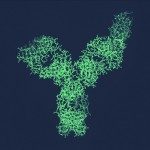Lien vers Pubmed [PMID] – 17073691
Curr. Protein Pept. Sci. 2006 Oct;7(5):369-93
The processes used by academic and industrial scientists to discover new drugs have recently experienced a true renaissance with many new and exciting techniques. The number of protein structures and/or chemical ligands is constantly growing, through the use of parallel chemistry, X-ray crystallography, NMR or homology modeling methods and so is the theoretical understanding of protein-ligand interactions. As such, structure-based approaches to drug-design and in silico screening are becoming routine part of most modern lead discovery programs. Prioritization of compound libraries is an extremely important task that aims at the rapid identification of tight-binding ligands and ultimately new therapeutic compounds. These in silico approaches combined with other experimental methods facilitate the design of new medicines to treat cardiovascular, degenerative, infectious, and neoplastic diseases, among others. Here, we review key concepts and specific features of several selected ligand-receptor docking/scoring methods while several other topics pertaining to the field of in silico screening are reviewed in the following articles of this special issue of Current Protein and Peptide Science.

